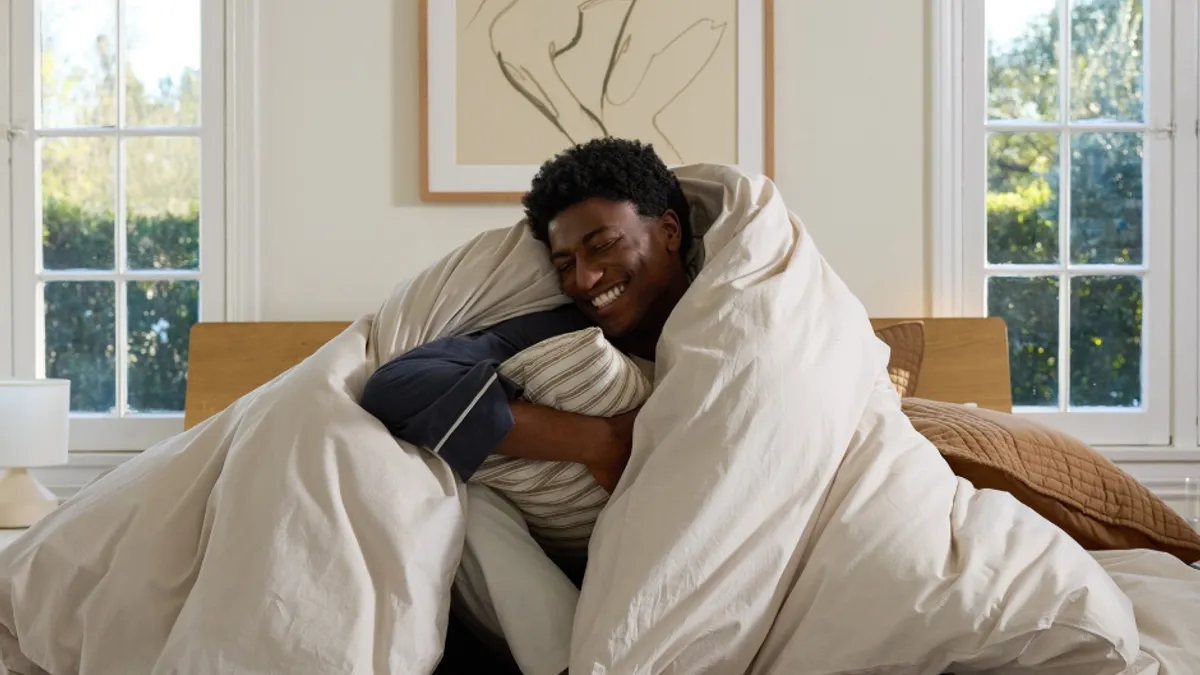When 2023 began, retail was starting to experience a slowdown in funding.
In 2021, global venture-based funding rose 111% year over year, according to data from CB Insights’ 2021 State of Venture report.
But that high quickly came tumbling down in 2022, when global funding dropped 35% to $415.1 billion, per CB Insights’ 2022 report. Retail venture capital deal count in the U.S. fell 28% from 2021 to 2022, according to data from PitchBook shared with Retail Dive late last month.
The outlook for funding in 2023 already looked bleak back in January, but the first half of the year may have turned out worse in some ways, Lerer Hippeau partner Andrea Hippeau told Retail Dive.
“I think the longer it stays bad, the worse it gets,” she said. “It becomes a little bit of a systemic issue versus just kind of a blip or a moment in time.”
But what does “worse” actually look like? Here’s a peek at how the funding market turned out during the first six months of the year and what might be on the horizon.
By the numbers
A look at the data so far this year doesn’t paint a pretty picture.
Global venture capital funding during the first half of 2023 reached just $130.2 billion, which is less than a third of last year’s $421.2 billion year-end total, according to data from CB Insights’ State of Venture Q2 2023 Report.
Median deal size globally is down in 2023 so far across all investor categories, which includes private equity and venture capital, per CB Insights.
“It's a little bit of a story of haves and have-nots,” Hippeau added. “The very, very best brands and the very, very best companies are still getting funded. But if you're even a dip below best in class, that's when it's becoming extremely challenging.”
For the first and second quarters combined, global funding in retail tech was $9.5 billion, down 76% from the same period in 2022 when funding was $39.6 billion. The number of deals during that time also declined by nearly 50% for the retail tech sector.
Looking at retail overall, funding as of June 23 was at $12 billion globally and $4.2 billion in the U.S., according to data from Crunchbase for the segments Retail Dive follows, such as apparel, consumer goods and cosmetics. The data excludes tobacco, drones, flowers, classifieds, laundry and dry-cleaning. In comparison, retail funding during the first half of 2022 reached $42.9 billion globally and $14.6 billion in the U.S.
The funding process seems to be taking longer overall compared to the last few years of peaked activity, Hippeau noted.
“We're telling companies it's going to take twice as long and you're going to have to talk to twice as many people as you did in the previous cycle for fundraising,” Hippeau added.
Deal count globally for retail was at 237 as of June 27, which is less than a third of last year's full-year total of 735 deals, per PitchBook. Although the numbers exude a sense of doom and gloom, the reality is that some companies are still successfully raising capital.
In perhaps one of the biggest retail deals so far this year, Kim Kardashian’s Skims brand closed a $270 million Series C funding round led by Wellington Management in July. The brand’s valuation reached a whopping $4 billion.
But you don’t have to be Kim Kardashian to snag fresh funding in a down market. Last month, activewear brand Ten Thousand raised $21.5 million, children’s brand Lalo secured $10.1 million and direct-to-consumer retail platform Leap raised $15 million.
Some food brands have also snagged funding, including Fly By Jing — known for its Sichuan chili crisp — which raised $12 million and Momofuku Goods, which secured $17.5 million, both in March.
But what can the industry expect during the months to come?
What the future holds
There may soon be another wave of funding rounds, with lower totals and lower valuations, as brands run out of options for capital. Hippeau expects the slow market could also lead to forced acquisitions and even companies going out of business as money dries up.
“We haven't seen that yet because of the companies that didn't have to raise. Maybe they raised a big round in 2021 or were very close to being profitable and were able to eke out a few more months before they had to raise,” Hippeau said. “Those companies are going to have to come to market unless they've been able to flip to profitability.”
Already this year, brands have experienced down rounds. Tonal, for example, was valued at $1.6 billion in early 2021 following a funding round, but by early 2023, the company's valuation had fallen to between $550 million and $600 million, according to The Wall Street Journal. Meanwhile, direct-to-consumer sleepwear brand Lunya in June filed for bankruptcy following a slew of issues such as declining consumer demand and a failed bet on retail stores.
Plenty of brands this year have also already been acquired some of which were bought out of bankruptcy. To name a few, hair care brand Mielle was acquired by Procter & Gamble in January, Aesop was bought by L’Oréal for $2.5 billion in April and Walmart sold off Bonobos, Eloquii and Moosejaw.
However, total merger and acquisition value did drop year over year during the second quarter from $1.14 trillion in 2022 to $732.8 billion, according to reporting from Reuters.
The success of Cava’s IPO in June, though, may mean there's an opening in the IPO market with pent-up demand for some segments, according to Hippeau.
“I do think there could be a momentary period of time where the IPO market moves up and maybe that leads to the venture world opening up a little more,” Hippeau said. “But I don't think that necessarily means that there's a full-blown recovery happening.”
Demonstrating some hope in the beauty space, Il Makiage owner Oddity went public in July. Oddity was at first aiming for a valuation of about $1.7 billion through its IPO, but wound up selling shares at a higher price than initially expected. The beauty company touts itself as consumer technology-driven, with centralized technology and data science departments for its brands. That may be an important distinction as the market shifts away from its earlier highs.
During the sector's prime years, direct-to-consumer darling brands were bringing in large amounts of cash. Private label company Brandless snagged $240 million from SoftBank in 2018, Casper reached a $1.1 billion valuation following a $100 million funding round in 2019 and razor brand Harry's was acquired for nearly $1.4 billion that same year. But across the DTC industry, Hippeau says that the current funding market seems to be reflecting some of the adjustments needed in the space.
“With platforms like Shopify and all the other kinds of tools that are out there, the bar is actually way lower to start a brand,” Hippea said. “As an example, why should Target buy a direct-to-consumer brand when they can spin up a brand, hire a branding agency and put up a Shopify site themselves? So I think the bar is lower for entry, which makes the former way of investing harder.”
Amid a sea of redundancy, artificial intelligence may bring forward innovation that the industry hasn’t seen in years. The technology could usher in new e-commerce companies and even improve the capabilities of brands' personalization. It might also reinvigorate venture capital interest in retail.
“AI, at the end of the day, is a really large technological platform shift,” Hippeau said. “We're at the very, very early innings of it. I do think that there's going to be a whole new crop of consumer companies leveraging AI in different ways, whether that's to be more efficient with their operations, so that they’re able to get to profitability faster, or different ways to service consumers.”




















